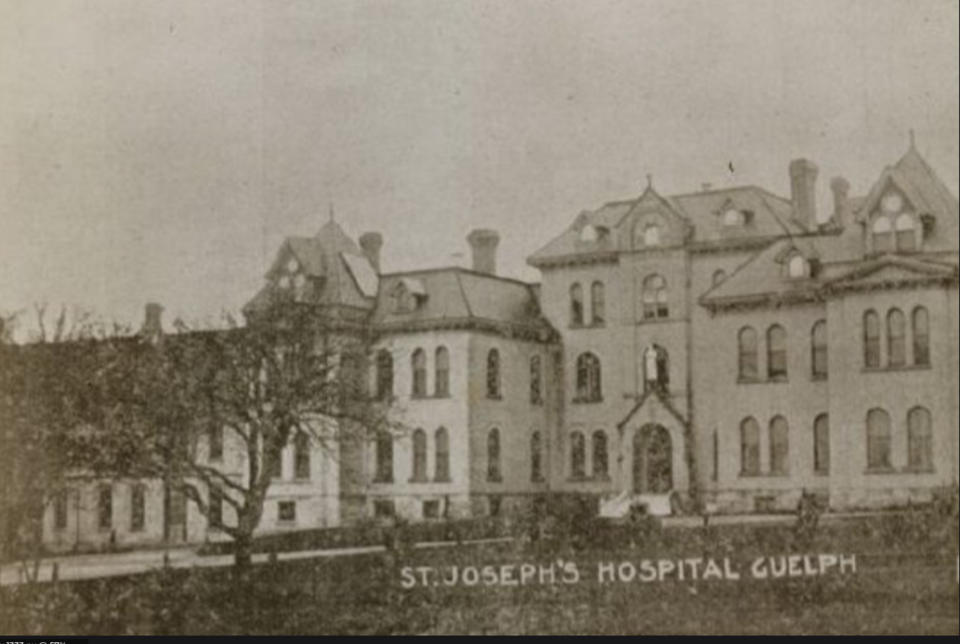History was made in Guelph in the first week of August of 1944 when, for the very first time, the new “wonder drug” called penicillin was administered to a patient in a Guelph hospital.
It would be difficult for people today to really understand what a world-shaking breakthrough the development of penicillin was for medical science. It was a weapon against a killer that had been snatching away human lives for thousands of years; bacterial infection.
Most of us have no doubt seen Western movies or old TV Westerns in which a character gets shot in the arm, but is okay because it’s “only a flesh wound.” All the doctor has to do is take out the bullet and put the injured arm in a sling, and the patient will be fine.
In reality, the wounded person would still be in considerable danger due to the very great possibility of infection. Even the smallest cut, or even a blister, could become infected and gangrenous, resulting in amputation or even death.
Aside from cleaning the wound with alcohol, there wasn’t much doctors could do to prevent infection because there were no antibiotics. Even that painful old stand-by treatment of cauterizing the wound with a hot iron was no guarantee of protection from infection, because the burn could become infected. Nor was there very much doctors could do to fight diseases caused by bacterial infections.
Sulfa drugs, discovered in the 1930s, were helpful against some illnesses, but ultimately, they weren’t the antibacterial silver bullet the medical profession yearned for.
There was a time when almost every school kid knew the story of how in 1928 Dr. Alexander Fleming, working in a hospital laboratory in London, England, observed that a certain type of mould produced a substance that inhibited bacterial growth. Because of the mould’s shape, he called it “penicillin,” from the Latin word for paintbrush.
It would take years of work and the efforts of a team of scientists that included Howard Florey, Edward Abraham, Ernst Chain, Mary Ethel Florey, Norman Heatley and Margaret Jennings, before medical science actually had a penicillin antibiotic that could be safely used to treat humans. That success would earn Fleming, Chain and Howard Florey the 1945 Nobel Prize for Physiology or Medicine.
News of the amazing new drug astounded the world, but it wasn’t immediately available for everyone. It took time to mass produce penicillin, and the Second World War was still raging. Most of the penicillin that came out of the laboratories of Allied countries like the United States, Britain and Canada was destined for military hospitals, where infections could kill soldiers who had received even relatively minor wounds.
Civilian hospitals would have to wait until enough of the drug could be produced to go around. In fact, penicillin production became the American War Department’s number two priority after the development of the atomic bomb.
One of the first Canadian soldiers to be treated with penicillin was a sergeant who’d been wounded in both legs while fighting in Italy. Before doctors would administer any of their precious supply of the wonder drug, they conducted a test to ensure that it would work on the bacteria infecting the man’s legs. If it didn’t, amputation was the only alternative.
The penicillin did work, and within weeks the sergeant was able to return to active duty.
Some of the first of the small sample of penicillin to be used in Guelph was administered to a pneumonia patient in St. Joseph’s Hospital. It saved that patient’s life. The rest of Guelph’s tiny supply was used for a case of osteomyelitis (bone infection). At the time that the Mercury reported on the
success of those procedures, the hospital was awaiting delivery of more penicillin to treat a case of endocarditis (bacterial infection of the heart valves).
The Guelph Mercury told readers, “Today, penicillin is past the primary experimental stage and Canada is producing it rapidly enough to enable distribution of the drug … it is successfully used against gas gangrene, burns, harmful bacteria in the blood, desert sores, V.D. and many other ailments.”
The Mercury also stated that in all of Canada, to date there had been only two cases reported of patients who were allergic to penicillin.
Of course, penicillin had its limitations, and medical scientists were the first to admit that. There were some bacteria on which it was ineffective. Further research would widen the range of bacteria penicillin could be used against.
But antibiotics do not kill viruses, and so cannot be used to treat illnesses like colds and influenza. Some patients can experience side effects from penicillin.
Soon after news of the discovery of penicillin became public, there were people who raised groundless fears about a medication made from mould, just as in an earlier day people had stirred up baseless fears about the smallpox vaccine, and even today spread false alarms about the COVID vaccine.
There were also people who believed, incorrectly, they could create homemade remedies from substances like moldy bread.
One of the main concerns with penicillin – something Alexander Fleming warned of from the very beginning – is overuse. Bacteria can be very adaptable, and over the years some strains have developed a resistance to penicillin. Medical science has to work constantly to keep pace with such developments.
The irrefutable fact remains that since the day on which the Mercury first reported on the use of the “wonder drug” in Guelph, penicillin has saved millions of lives.



.png;w=120;h=80;mode=crop)